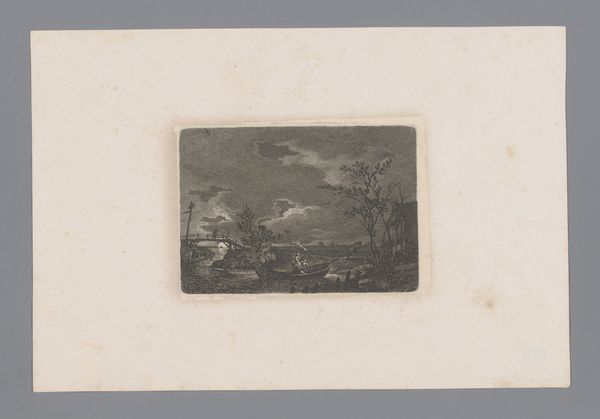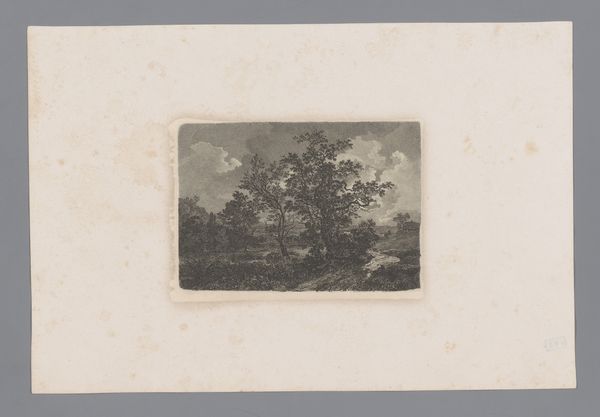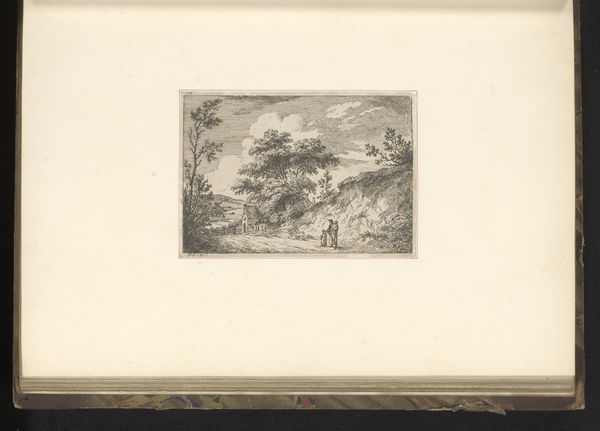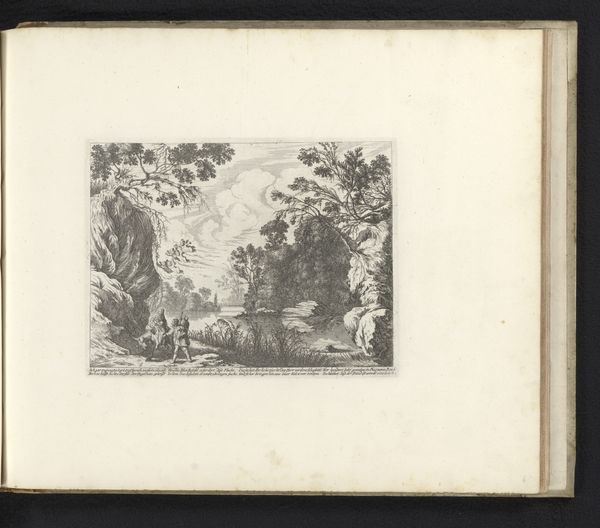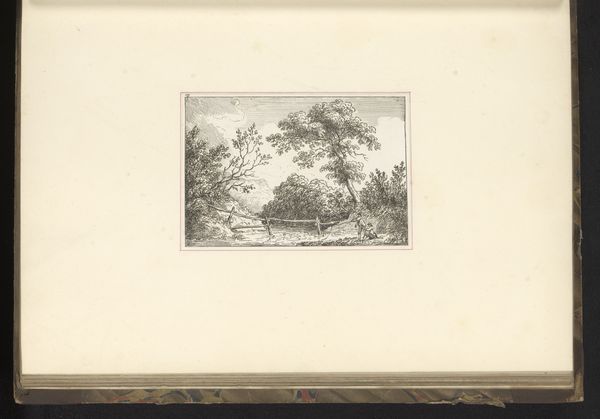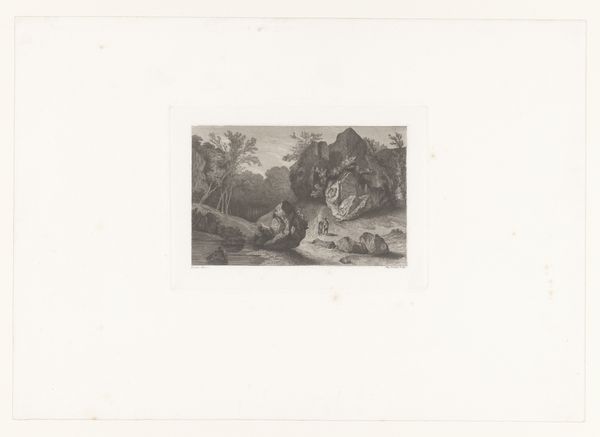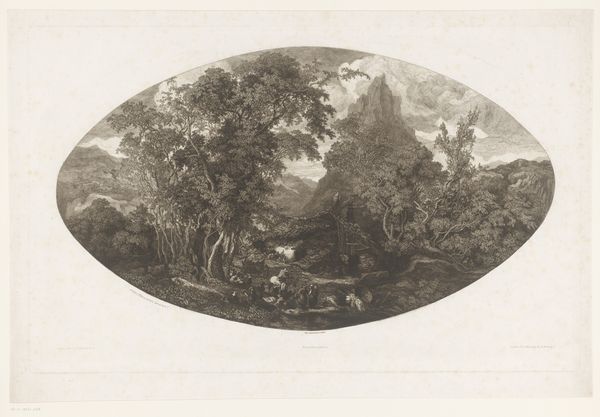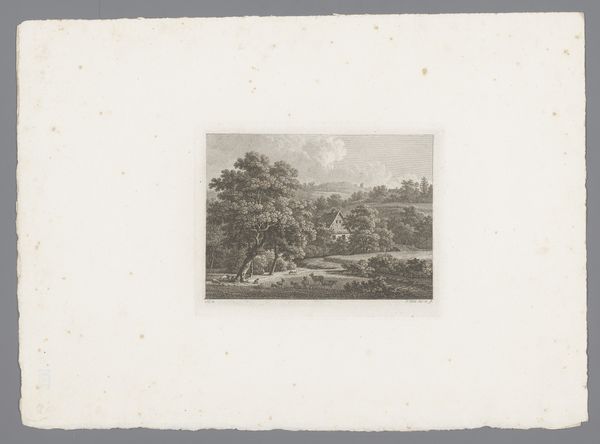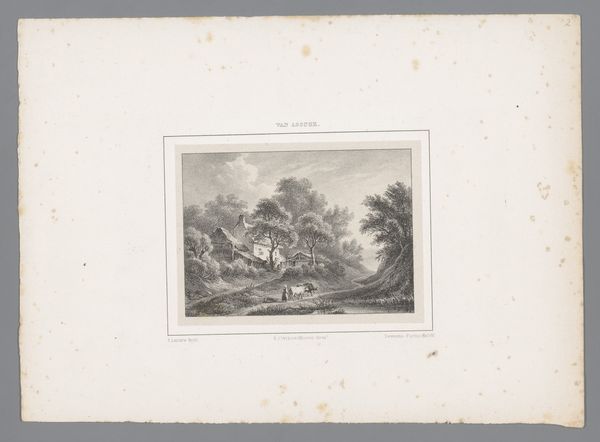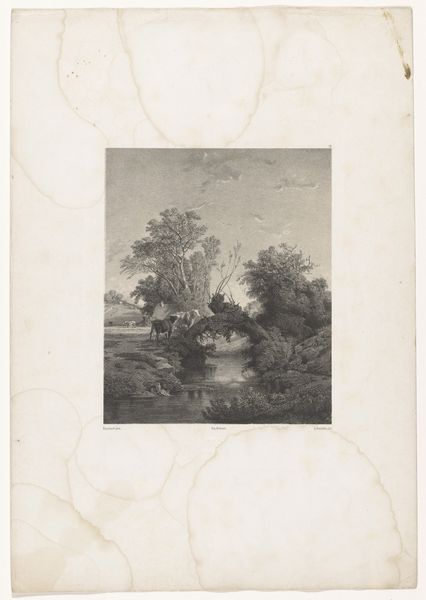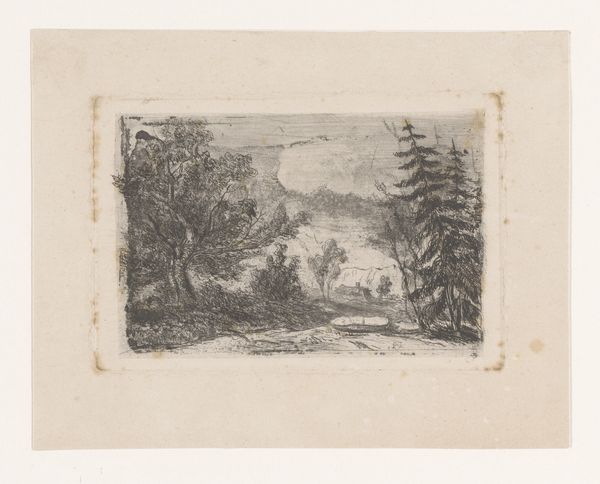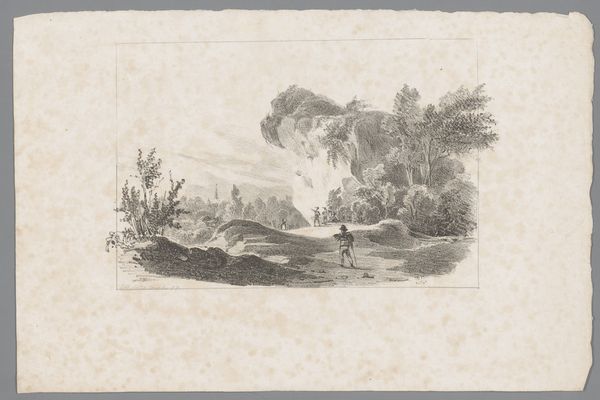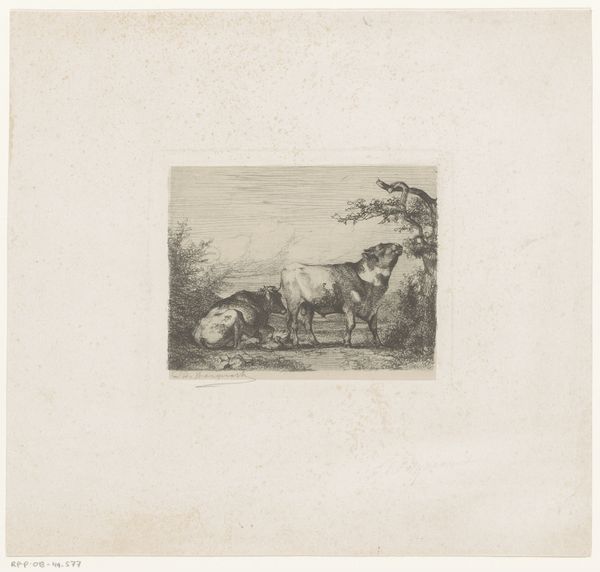
print, etching
#
narrative-art
# print
#
etching
#
landscape
#
romanticism
Dimensions: height 87 mm, width 128 mm
Copyright: Rijks Museum: Open Domain
Editor: This is "Travelers in a Night Landscape" by Carl August Lebschee, an etching made around 1827. The high contrast and the strong moonlight give it an almost theatrical quality, and those travelers look like they're in for a rough journey. What strikes you about this print? Curator: I'm drawn to the romantic portrayal of nature, of course, but it makes me think about who gets to travel safely, and who is forced to travel at night. Lebschee created this during a time of immense social upheaval, of increasing urbanization that drove rural displacement and class division, so in what ways are these themes being evoked through his chosen imagery? What stories might these people carry, and are they traveling by choice, or by necessity? Editor: That's something I hadn't considered. I was mostly focusing on the aesthetic of the Romantic landscape. Curator: It's a stunning composition, absolutely. But let’s push beyond the purely aesthetic response. Romanticism can glorify a certain vision of nature while ignoring its role in maintaining social inequalities, particularly who gets to experience its beauty without facing exploitation. How does this nocturnal journey relate to ideas of forced migration or the precarity of travel for marginalized groups throughout history and even now? Editor: I see what you mean. The landscape isn't just beautiful, it also looks menacing. They are vulnerable to the elements and potentially to other people. Curator: Exactly! The artistic representation highlights human struggles. Art isn't separate from historical and social struggles; instead, it holds the opportunity to reflect those conditions back to us so we can learn and perhaps inspire others towards justice and freedom. What do you make of the size? Does the miniature nature impact our experience, our interpretation? Editor: The size could speak to the marginalization of their stories... I guess it makes sense; even landscapes have a history rooted in power. Thank you for making me see this from such a different perspective. Curator: It’s a crucial part of engaging with any piece of art. I feel it's vital to discuss history, gender, and power together to form our interpretations.
Comments
No comments
Be the first to comment and join the conversation on the ultimate creative platform.
